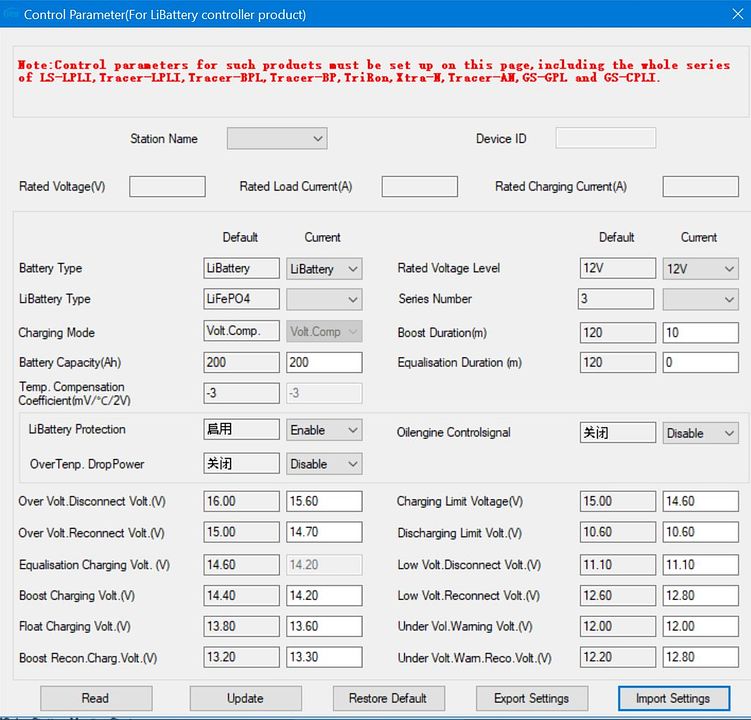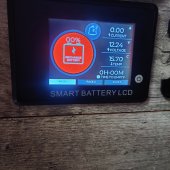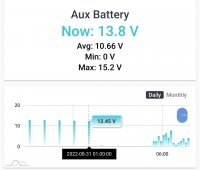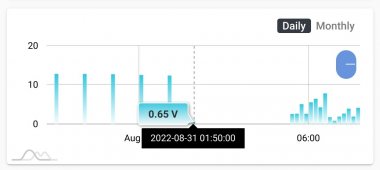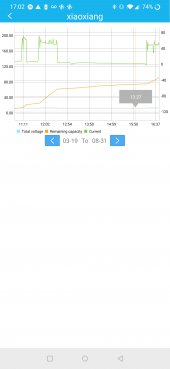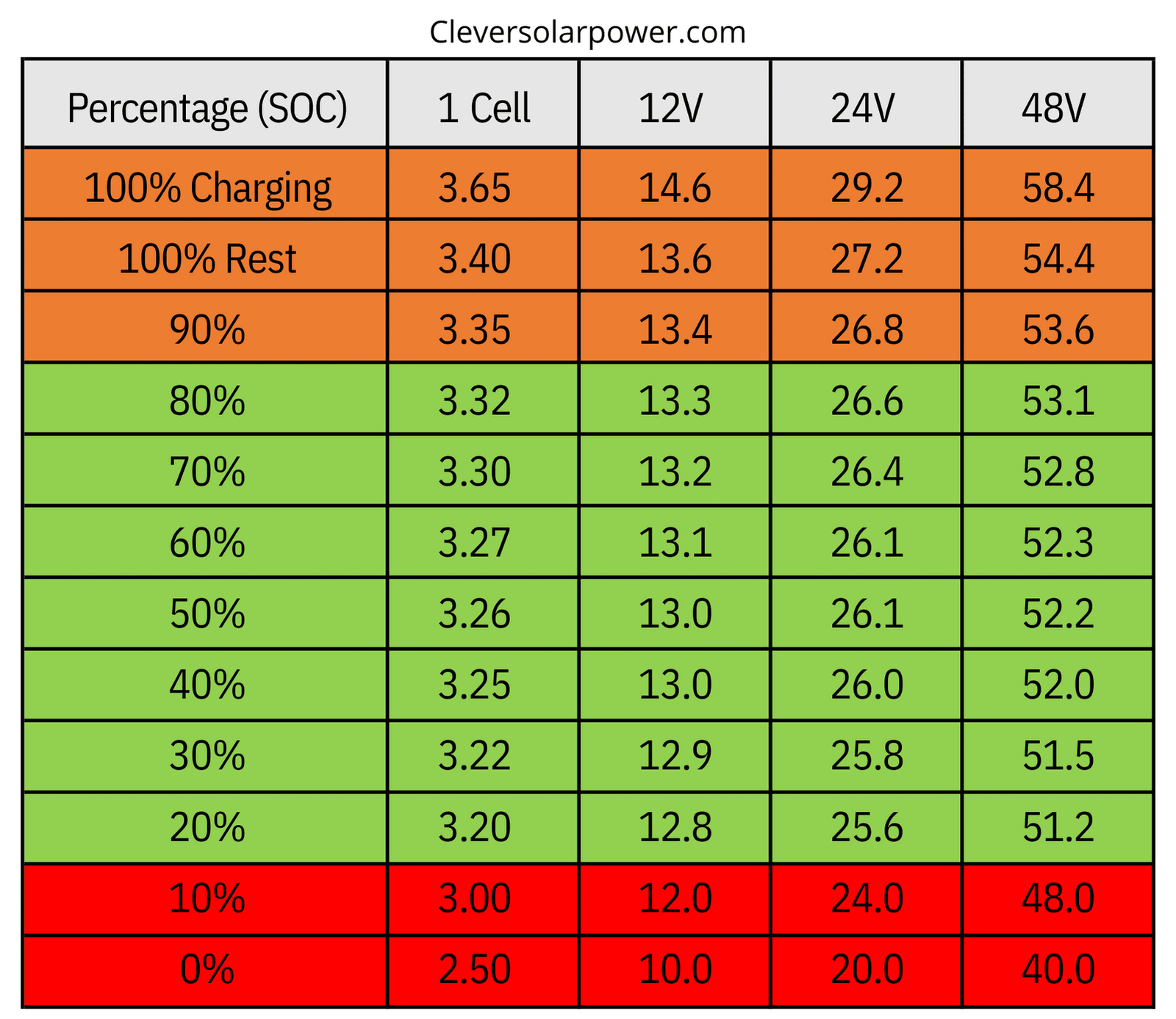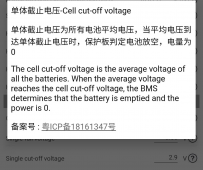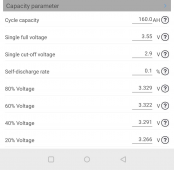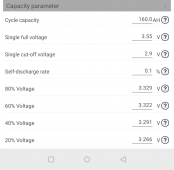Hi, I built a 200ah LFP battery at the start of the year (see other post on here) and it's been performing pretty well.
It lives in my camper and it's recharged by 350w solar and a 30a dc-dc charger. It has a constant load of around 2a as well as the fridge which pulls an additional 5a for a few mins when it turns on.
I also have an induction hob which pulls around 100a when used, but is very rarely used for longer than 20 mins.
The battery was nearly always above 50% SOC, usually closer to 80% and with a good voltage.
After accidently running it to 0% a few weeks ago, I tweaked some of the BMS parameters and now the battery seems to be a much smaller capacity, even though the BMS says it has a 200ah capacity. Last night for example, with only the fridge and general electrics on, it drained from 85% to 45%. There was definitely not 80a pulled during the 7 hours we slept.
The general voltage now seems to be around 12.5-13v and drops to between 11.8 and 12.2 under heavy load (100a)
Does this sound right? Or perhaps the symptoms of failing cells? Or perhaps incorrectly setup BMS?
The BMS is set according to the cell parameters. I'll prepare screenshots of the settings when I can.
N.b there isn't any extra load that I wouldn't know about. And I have a display connected to the BMS so can always check the current draw. It's never over 7a unless the cooker is on, but is at 2a around 80% of the time.
Thanks
It lives in my camper and it's recharged by 350w solar and a 30a dc-dc charger. It has a constant load of around 2a as well as the fridge which pulls an additional 5a for a few mins when it turns on.
I also have an induction hob which pulls around 100a when used, but is very rarely used for longer than 20 mins.
The battery was nearly always above 50% SOC, usually closer to 80% and with a good voltage.
After accidently running it to 0% a few weeks ago, I tweaked some of the BMS parameters and now the battery seems to be a much smaller capacity, even though the BMS says it has a 200ah capacity. Last night for example, with only the fridge and general electrics on, it drained from 85% to 45%. There was definitely not 80a pulled during the 7 hours we slept.
The general voltage now seems to be around 12.5-13v and drops to between 11.8 and 12.2 under heavy load (100a)
Does this sound right? Or perhaps the symptoms of failing cells? Or perhaps incorrectly setup BMS?
The BMS is set according to the cell parameters. I'll prepare screenshots of the settings when I can.
N.b there isn't any extra load that I wouldn't know about. And I have a display connected to the BMS so can always check the current draw. It's never over 7a unless the cooker is on, but is at 2a around 80% of the time.
Thanks






